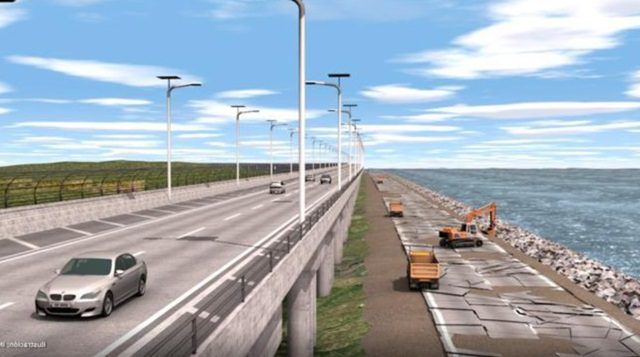BTN News: The road connecting Ciénaga and Barranquilla, a critical corridor for the Caribbean region of Colombia, has become a nightmare for drivers, especially those transporting goods and passengers. With an average traffic volume of 13,000 vehicles per day, the road is severely congested and no longer meets the demands of its users. This congestion is particularly problematic during peak hours when long lines of vehicles turn the highway into a dangerous bottleneck. Drivers, like Freddy Roa, who frequently travel between Barranquilla and Santa Marta, describe the route as a “total chaos,” fearing not just for their cargo but for their lives.
The situation is exacerbated by frequent blockades in the communities of Tasajera and Ciénaga, where residents often protest for better services or demand money from drivers. These blockades, often exploited by criminals to rob vehicles stuck in traffic, only add to the chaos. For Daniel Medina, a bus driver, what should be a journey of just over an hour can easily extend to two hours on a day without disruptions. However, during protests, travel times can stretch to six hours or more, causing immense frustration and leading to risky behavior from drivers desperate to escape the gridlock.
The precarious state of the road not only endangers those who travel on it but also invites illegal transport services to exploit stranded passengers, charging exorbitant fares that triple the usual cost. This situation highlights the dire need for the expansion of the road into a dual carriageway, a project long overdue and desperately awaited by the local population.
Plans for this expansion, led by Concesión Sierra Mar, promise to significantly improve traffic flow and safety for over 970,000 residents in the region. However, despite the initial optimism following the project’s announcement, there is growing concern over the delays in commencing construction. A particular point of contention is the construction of viaducts at kilometer 19, a segment critical to the project’s success. The National Environmental Licensing Authority (ANLA) recently announced that approving the necessary licenses could take up to 10 more months due to the lack of comprehensive technical studies.
This delay is a heavy blow to the community and transport operators who have been waiting for decades for this vital infrastructure upgrade. The ANLA emphasizes that the environmental impact on the Ciénaga Grande, a fragile ecosystem already strained by reduced saltwater inflow, must be carefully considered. Nevertheless, the need for the road’s expansion is undeniable, particularly as the threat of coastal erosion looms large.
Senators from the Caribbean region, like Antonio Zabarain, have raised alarms about the real danger that the sea could overtake the road, potentially isolating more than 30,000 people who depend on this vital corridor for daily travel. The inefficiency of the National Roads Institute (Invías) in advancing the project has been a point of criticism, with many leaders calling for urgent action to address the vulnerabilities of the road, especially in the erosion-prone areas around kilometer 19.
Efraín Cepeda, president of the Intergremial Committee of the Atlantic, has stressed the need for immediate action to prevent a potential disaster, particularly with the approaching cyclone season, which is predicted to be 85% more intense than usual. The risk of tropical storms and hurricanes causing irreversible damage to the road is high, and any further delays in the construction could lead to a major crisis, cutting off communication between the departments of Atlántico and Magdalena.
To accelerate the process, Cepeda has proposed issuing a partial license to begin construction of the viaducts while the remaining technical studies are completed. This interim solution could be crucial in mitigating the risks before it’s too late. It’s important to remember that this road is not only vital for the mobility of people but also for the economy of the entire region. A significant portion of the tourism and commerce between Barranquilla, Santa Marta, and Cartagena relies on this corridor, as does 75% of the food supply to the Central de Abastos.
The urgency of this project cannot be overstated. Local senators continue to pressure the national government and relevant authorities to prioritize the road’s expansion, aware that any further delays could have devastating consequences for the Caribbean region. The completion of the dual carriageway between Ciénaga and Barranquilla is not just a matter of convenience—it’s a critical step toward ensuring the safety, economic stability, and environmental sustainability of the area.


